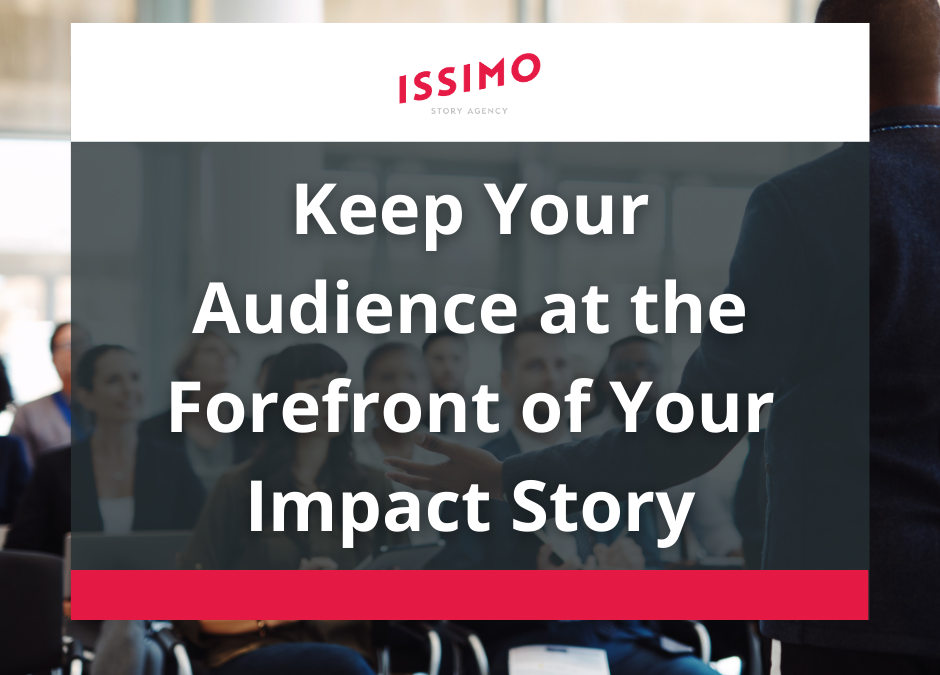Your Impact Story’s Success Depends on It
We believe that fundraising success comes from telling the right impact story in the right way at the right time — not from having the most resources. This was the biggest takeaway from our attitudinal research study about how impact and for-good organizations can be more effective fundraisers.
We found that no matter the budget (ranging from $25,000 to $1 million annually), impact organizations of all sizes struggle to tell effective stories that compel action (and reach fundraising goals).
What if the solution to your fundraising challenges was putting the resources you have into telling high-quality, emotional, thought-provoking stories that compel people to take action?
So many impact organizations are trying to communicate their brand story and mission but aren’t seeing the results they want. Case and point: Most impact organizations strongly agree that telling a consistent and compelling story about their organization would make fundraising more efficient and effective. They also strongly agree that investing in storytelling is important to reach the investors and donors they want. But there’s a gap between intention and execution.
In our last blog, we discussed the importance of showing (not just telling) your impact objective, especially through visual storytelling. With over 90 percent of impact organizations saying they have some leadership support in visual storytelling methods, it’s not a question of getting everybody on board but how to be intentional about getting the message across effectively and efficiently.
Meeting Your Audience Where They’re At
More than geography, demographics or past fundraising success, it’s most important to meet your audience where they are mentally and emotionally. Remember, stories drive actions when they connect to the head and the heart. Your audience needs the business case (head) for what you do to inspire them to become part of your story (heart).
Perspective is subjective. To tell stories that reach your audience, you have to understand what unique points of view they hold about the world, your organization and the object of your impact.
Understanding your audience’s biases and perspectives can give you crucial insights into crafting a compelling story that centers them as the hero. These biases aren’t necessarily positive or negative, but they can affect how your audience receives your story and message. Use your audience’s biases to your advantage to increase your fundraising success.
“The eye sees only what the mind is prepared to comprehend.”
― Robertson Davies, Tempest-Tost
There are many complex methods for determining your audience’s perceptions and biases. Start by stepping outside your assumptions and talking with people in your target audience to find the answers. Here’s an example:
A new brokerage came to us frustrated at their inability to attract agents to join their team. For 18 months, their message centered around becoming a “warrior” for one of the industry’s top performers. But it wasn’t working.
Our first step was understanding where their audience was and what their biases and perceptions were. We had several informal calls to their prospective audience and uncovered serious misalignments in their messaging. The potential recruits were running their own firms and saw themselves as the top dog. They had no interest in working for someone else. The notion of being someone else’s warrior backfired.
To combat this, we crafted a message that spoke to potential recruits as equals, showing respect for their success and their time. Here’s how we structured the campaign:
- Prospect discovers a FedEx delivery at the door, signs for it and opens it up to find a Lenovo tablet.
- When they turned it on, a video played, “Hey [personalized name], I know you’re one of the top agents in [specific market]. As a top performer, too, I know the hard work you must have put in to get there — working 90+ hours a week to make multiple six figures. The problem is there’s a ceiling you can’t push past. And if you’re like me, you don’t like limits on what you can accomplish. But what if I could give you 20 hours a week back and a 50 percent raise? Would you be interested? This tablet will self-destruct in 30 seconds — just kidding! It’s yours to keep, a gesture of how serious we are. Our team will be calling you in 15 minutes to set up a time to chat.”
The campaign generated more leads in 2 weeks than the previous 1.5 years of all their other marketing efforts combined. All the insight into reaching the audience came from asking questions and listening to understand the audience’s perceptions and biases better.
Ask yourself: What do potential investors or donors think about your mission? Your message could sound quite different. For example:
- Scenario A: Potential investors and donors are more concerned about a good PR spin and want to be seen as good corporate citizens.
- Scenario B: Potential investors and donors are hyper-vigilant about greenwashing and would rather sit an opportunity out rather than back anything that isn’t “dark green.”
You have to meet your audience where they are to take them where you want them to go.
Speak Their Language
If you’re like 39 percent of impact organizations, you think that a clear and compelling message that connects with funders has the greatest impact on your fundraising efforts. Once you understand who your audience is and how to speak their language, it’s much easier to be consistent with your storytelling and messaging.
Ask yourself: What vocabulary/terminology does your audience use? How do they describe their problems? What do they want in a solution? What cadence, tone and diction do they use when most connected to a greater purpose?
“If you talk to a man in a language he understands, that speaks to his head. If you talk to him in his native language, that speaks to his heart.”
— Nelson Mandela
It’s about speaking to your audience as a peer and insider, and connecting with them in the universal language of shared humanity. Everybody knows what it feels like to be inspired, hurt, or want a better world. We all know the feeling of eating a satisfying meal, even if we use different words to describe it.
Use words, descriptions, themes and terminology that feel familiar to your audience to connect with the head and the heart.
Tailoring Your Message
It’s also important to think about how your audience will interact with your impact story because the platform or medium can shift how and what you say. Audience expectations can also vary. What’s effective for an in-person presentation might not perform well on social media and vice versa.
Here are general guidelines for different platforms:
Events
- Tradeshow: You have six seconds, on average, to grab someone’s attention. You should also anticipate people not being able to hear audio. These are two reasons why signage is critical.
- On-stage events: Be sure to have a clear “sit down and get quiet” cue before your message starts to get people’s attention. Additionally, most venues don’t want the audience in complete darkness and have poor projection set-ups. As a result, anything on screen tends to be slightly washed out and harder to see.
One-on-one Presentations
- Even though you have a more captive audience with a longer attention span, don’t abuse it.
- Personalize your messaging as much as you can.
Social Media
- Up to 85 percent of videos are played with the sound off. Use captions or callout text to make the story clear even in silent mode.
- Front-load your story because studies show you have 1.7 seconds on mobile and 2.5 seconds on desktop to engage a viewer before they scroll past you.
- Shorter is usually sweeter. There’s a definite “time shock” (like sticker shock) for videos that last too long.
Website
- Be aware of regulations around soliciting investments, as some jurisdictions don’t allow you to market to unaccredited investors. Because it’s difficult to control who’s visiting your site, keep messages high level and avoid specific deal terms that are subject to change.
Additionally, consider how your impact story evolves based on where your prospect is in your sales funnel. If you’re building general awareness, the message needs to be more eye-catching and concise. If you’re steps away from a signed deal, your messaging needs more meat.
Closing Thoughts
There is no one-size-fits-all for telling the right impact story. Your organization’s story must be authentic and uniquely yours and connect with your audience’s head and heart. When these pieces align, it doesn’t matter how many employees you have or how large your budget — your story will resonate.
To learn more about each segments’ behaviors and how you can tell the right story, check out our entire executive summary. And to explore the data yourself, check it out here.

